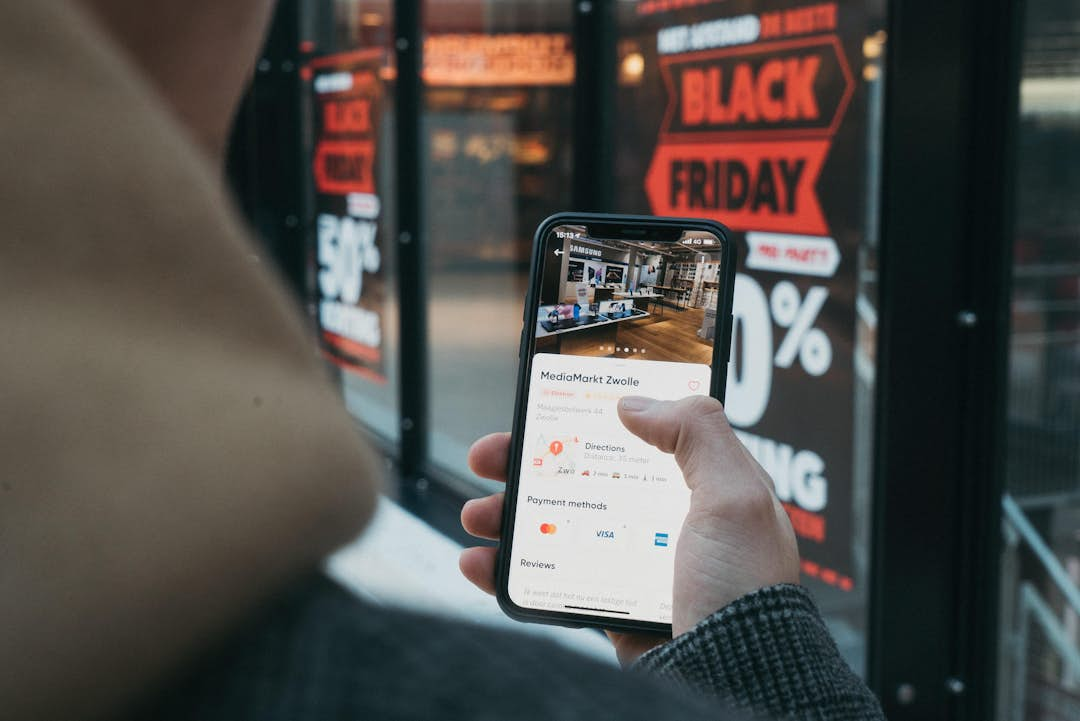
E-mail marketing starts with good intentions
2023 is coming to an end, and you may already be busy focusing on 2024. Have you included email marketing in your marketing strategy yet? Or are you not so sure where to start (yet)? We would like to give you a few tips on how to start the year off right with your email marketing.
Analyse your 2023 results
Start at the beginning. What exactly did you learn about your current strategy in 2023? Analysing your data is hugely important to create a starting point for the year ahead. For example, did you attract many new customers? How many customers placed repeat orders? All this data is important to know exactly what you should focus on for the coming year. Does this still sound too abstract for you? Then follow the step-by-step plan below for a complete analysis of your e-mail marketing.
Step 1. Analyse your database
Give yourself an insight into your database. How many email addresses did you have at the beginning of this year and how many do you have at the end of this year? How many percent did you end up growing? Also take a close look at where this growth came from. Is this your current website via an opt-in? Or perhaps from a pop-up, landing page or social campaign. A growth in your database is nice, but it doesn't always say anything. It says something about the growth of your customer base, but not so much about your engagement with your customers. Therefore, analyse not only the growth, but also what percentage of your customer base actually converted this year. Has this also grown? Then you can be proud of yourself.
Step 2. Analyse your regular newsletters
What is often forgotten by many a marketer is the regular newsletter. Do you send a newsletter to your entire database every week or every fortnight? If so, check carefully what the open, click, and conversion rates have been. Did it make sense to send out this newsletter continuously? Or should you perhaps adjust the frequency? More is not always better. Think carefully about what exactly your customer wants to see in the newsletter and what contributes to that. Think for instance about a fun win action, discount code or other important news.
Step 3. Analyze your targeted newsletters
Besides your regular newsletters, you might also send targeted newsletters. Targeted newsletters are newsletters you send to a more specific target group. Think of:
- Fans of a particular brand, you are having a sale with
- All customers who bough Christmas presents last year
- All customers interested in a particular brand
This marketing strategy is widely used: you segment your target group until you are left with a group that specifically expects an offer from brand X or Y. Your newsletter connects extremely well with this target group and the conversion rate will probably be higher than a regular newsletter. Analyse the data on the different target groups well. Maybe you still have data from these segments from 2022? If so, it's not a bad idea to compare the data side by side.
Step 4. Analyse your automations
In your email marketing, you are bound to have automations on. Automations we are talking about include:
- An automatic flow for all abandoned shopping carts
- An automatic flow with a thank you for a new newsletter subscriber
- An automatic flow with a birthday present on your customer's birthday
- An automatic flow with a thank you for your customer's order
Er zijn een tal van automations te bedenken. We hebben hierboven de meest bekende genoteerd, maar zien in de praktijk nog veel mooiere flows voorbij komen. Het is overigens niet alleen van belang om te kijken naar open-, click-, en conversierate, maar ook naar het aantal afmeldingen. Je aantal afmeldingen zeggen iets over je frequentie of over de inhoud van je e-mail.
Step 5. Bundle all your data into one sheet
Do you have your data from every branch of e-mail marketing available? Then it would be nice to have this in a single overview. Make time to create a clear sheet, possibly with diagrams. This also makes it easy for your colleagues to understand the data.
Step 6. Form your conclusions
How wonderful, all your data clearly set out in one sheet. Do you also have data from last year? Bonus points! You can now easily see which campaigns did well, did not do so well or did not yield anything at all. Did you run different campaigns from last year? Don't just look at the conversion here, take all KPIs into account. Perhaps a lot of sales came from a particular newsletter, but it was only one big order. It can then be valuable to look precisely at how many orders came from an e-mail. Or how many discount codes were used or which newsletter had the highest open rate. Only when you include everything in your considerations will you draw the right conclusions?
What do you want to achieve in 2024?
Chances are you've been working on your overall marketing strategy for 2024 for a long time. How can email marketing contribute to achieving your goals for 2024? Email is a supporting conversion channel. Which channel might you want to combine with email marketing? How will email marketing contribute in your marketing strategy? Set appropriate goals based on your conclusions drawn earlier. Some goals could be:
- Collecting leads
- Increasing the number of visitors to your website
- Increase conversions on your website
- Enriching your customer data
- Approaching your customers more personally
Adjust your strategy to trends
Have you created a good strategy? Then think carefully about adapting your strategy to the trends of 2024. It would be a shame if your strategy does not catch on because it is outdated. The biggest trends for 2024 for email marketing are:
1. Shift towards omnichannel marketing
The need for data is growing every year. With this need, you also get more and more streams of data. Just think about your website, e-mail, social media and your offline communication. Your data is scattered everywhere, which can make it difficult to make the best use of all the data. The shift towards omnichannel marketing is therefore inevitable. Ideally, as a marketer, you would also like to see your data neatly in one system, giving you a complete customer profile containing all your data. That way, your marketing becomes clear.
2. Optimize thanks to website data
Your website is full of data, including that of your customers. Because how cool is it to adapt your marketing strategy to the behavior of your customers? What are they searching for, what are they looking at a lot, and what are they clicking on a lot? These are all interesting data to include in your email marketing. You are very relevant when a customer looks at a specific product and later receives an e-mail about it. Chances are the customer will convert on that.
3. Optimizing thanks to AI
2023 was perhaps the year of Chat GPT and other tools in AI. 2024 is going to be all about AI. We won't let AI do the work, but we will use AI for inspiration. Think personalization in emails, optimization of sending times and, subject lines.
4. Google's new anti-spam policy
In 2024, Google is tightening its anti-spam policy. The new rules will take effect from February 2024. Not a lot will change, but it is wise to prepare for it. For instance, every major sender must mail from a validated domain, offer the possibility to unsubscribe your customers, and avoid flooding the e-mail list with unwanted e-mails.
You will have to factor all these trends into your email marketing strategy. Only then will you be optimally prepared for 2024.
Don't forget: clean up your list
Start your year fresh by cleaning up your list. Eventually you will have collected many email addresses, but they may not be nearly as valuable as when you obtained them. Email addresses change, age or even no longer exist. Time to take a closer look at your list.
Why do you want to clean up your email list?
A customer database that is up-to-date is very important for several reasons. For one thing, you ensure a higher open rate. After all, you only mail customers who are actually interested in your e-mails.
When you exclude or delete profiles that have not brought you any sales for a long time, you have:
- An up-to-date customer database
- Fewer spam complaints
- A higher open rate
- Fewer active profiles
- Fewer soft bounces
- You increase your own sales opportunities
- You improve the sending reputation
- You improve the relationship with your subscribers
- Your reports are more accurate
When is it time to clean up your list?
There are several signs when you notice it is time to clean up your list:
- Low open and click rate;
- High bounce rate;
- High number of spam complaints.
Every business is different. Cleaning can be done monthly, half-yearly or annually. It all depends on what you like and what suits your business. It is advisable to do this at least once a year.
An up-to-date customer database is important for several reasons. Among other things, you ensure a higher open rate, but also more representative figures. You only mail your customers who are genuinely connected to you.
One way to clean up your customer database is to filter by last order. You then look at who is still ordering from you, and more importantly, who is not. Profiles that haven't ordered anything from you for a long time are most likely no longer interested in you and you can exclude them.
How do you clean up your email list?
Cleaning up starts with determining the following groups:
- Determine what your inactive subscribers are
- Set up a win-back campaign for your inactive subscribers
- See which group of inactive subscribers you are left with
- Check for bounces and manage this
- Determine what your inactive subscribers are
Inactive subscribers are simply subscribers you no longer have engagement with. Think of customers who haven't ordered from you in the past year, or customers who haven't opened your past 5 emails. Bundle this group of customers. After all, you want to give these customers one or two more chances to still convert and engage with you.
Set up a win-back campaign for your inactive subscribers
It may sound crazy: set up a campaign specifically for your inactive subscribers. You want to give these customers one or two more chances to buy from you. You start a so-called "win back" campaign to win these customers back. The customers are already familiar with your webshop, but still lack a little push to make another purchase. A series of e-mails for this group of customers is not a bad idea. Think of an e-mail with the title "we miss you" and give your subscriber a 5% discount. Will your subscriber not budge? Then send another email a week later, but with a 10% discount or free shipping.
See what group of inactive subscribers you are left with
Does the order stay completely off? Even after several discounts and offers? Then you can argue that your customer is no longer interested and best remove the e-mail address from your database. This group of inactive subscribers will bring down your open, click and conversion rates. In addition, they are no longer interested in your webshop. The best thing to do is to say goodbye to them.
Check for bounces and manage this
Do you regularly have email addresses that bounce? Then keep an eye on this. A bounce can always occur because an inbox is full. This is called a "soft bounce". A soft bounce shows a deliverability problem of a temporary nature. But, an e-mail can also bounce because the e-mail address no longer exists or because there is a typo in the e-mail address. This is called a "hard bounce". A hard bounce is due to a permanent deliverability problem. Do you see that the same e-mail address keeps bouncing consecutively? Then it is wise to remove this e-mail address from your database.
Conclusion
This will give you an idea of how to improve your email marketing strategy for 2024. Summary: Analyse the 2023 results to understand areas of focus for the year ahead. The key steps here are:
- Database analysis. Understand the growth of your database and sources of new email addresses. Assess the conversion rate of your customer base.
- Analysis periodic newsletters. Evaluate the performance of regular newsletters in terms of open, click and conversion rates. Consider adjusting frequency and content based on customer preferences.
- Analyse targeted newsletters. Assess targeted newsletters sent to specific customer segments and compare their performance with that of regular newsletters.
- Automation analysis. Assess the performance of automated email streams, such as abandoned shopping cart emails, and consider open, click, conversion and unsubscribe rates.
- Data compilation. Compile all data into a summary sheet for easier analysis and better understanding.
- Draw conclusions. Compare current data with previous years to identify successful campaigns and areas in need of improvement.
In addition, you set goals for 2024 that should align with your overall marketing strategy. Possible goals include generating leads, increasing website traffic, improving customer engagement and personalizing customer interactions.
Finally, we recommend regularly cleaning the email list to maintain relevance and effectiveness. This includes identifying inactive subscribers, launching win-back campaigns, removing consistently inactive profiles and managing bounces. An updated email list improves open rates, reduces spam complaints and improves overall email marketing performance.





